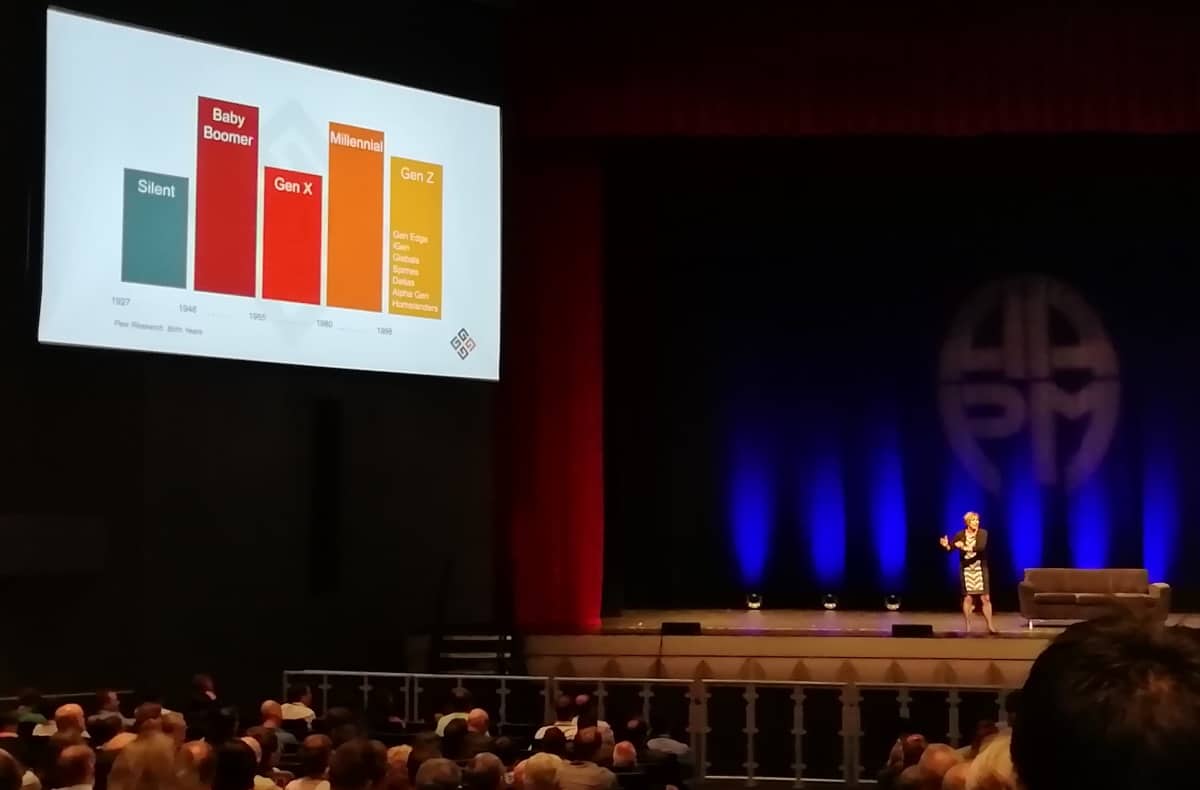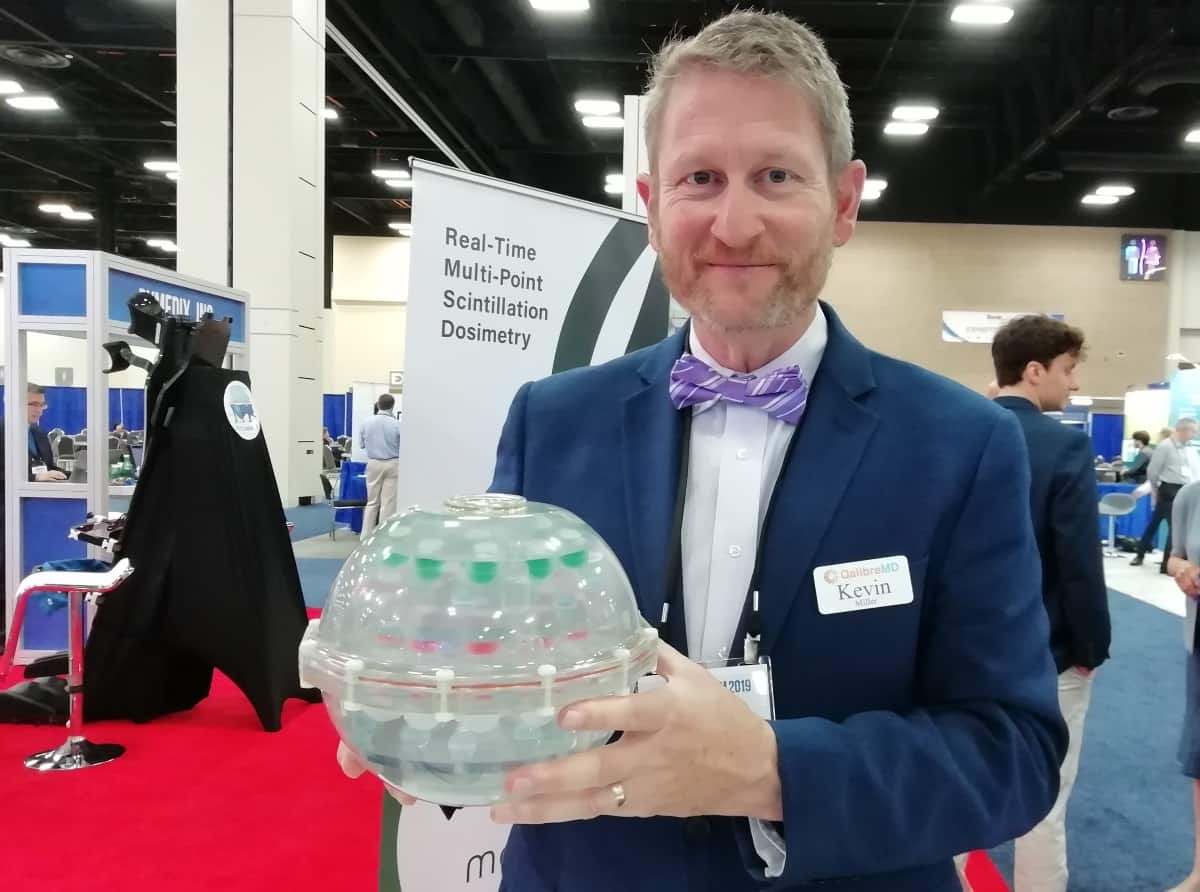
I’ve just returned from the AAPM Annual Meeting in San Antonio, and the mild drizzle of South-West England is proving a welcome relief from the searing temperatures of Texas in July. Oppressive heat aside, the event provided an invaluable opportunity for medical physicists from around the globe to catch up with colleagues and old friends and discover the latest innovations in all areas of medical physics.
This year’s meeting was attended by some 3000 delegates. And many of the conference sessions, notably those covering themes such as FLASH radiotherapy and machine learning, were packed full of attendees eager to hear more about these hottest of topics. Other conference highlights included the MedPhys Slam competition, the Young Investigator Symposium and the Best in Physics poster session, all of which I’ll be reporting on in due course.
One high point was the outstanding President’s Symposium. AAPM president Cynthia McCollough from Mayo Clinic kicked off the session with a talk entitled “Is Everyone at Your Table?”, in which she examined diversity and inclusion within AAPM and emphasized how to harness the collective talents of diverse individuals.
Guest speaker Amy Lynch – triathlete, stand-up comic and generations expert – then discussed the importance and power of multi-generational teams. In a fully interactive presentation, Lynch shared some entertaining insight on the different outlooks of current generations in the workforce, providing helpful tips, for example, on how Baby Boomers can best understand the thinking of Millennials and vice versa.

Over at the AAPM exhibition, more than 100 companies showcased their product developments. One that caught my eye was DoseOptics, which exhibited its C-Dose radiotherapy verification system. The device works by imaging Cherenkov light emitted when the treatment beam traverses tissue and provides real-time visualization of the beam on the patient.
Research engineer Cedar Farwell told me that the C-Dose camera intensifies the detected Cherenkov signal and converts it to a measure of radiation dose. “The system is synchronized with the treatment beam, it detects X-ray scatter in the room and only captures signal when the beam is on,” he explained. C-Dose is already being used in five clinics for research, and DoseOptics is in the process of getting FDA approval.
The show also featured several start-up companies, such as QalibreMD, which creates a range of phantoms designed to enable quantitative MR imaging. The company’s System Phantom, for example, contains spheres of different T1 values, ranging from healthy to necrotic tissue. While MR scans are currently analysed like photographic images, with the reader trying to discriminate grey scales and pick out features, imaging the phantom will provide absolute reference values with which to assess the scanner’s response. The end result: more accurate diagnostic results.

I also spoke to Kris Huang, CTO at Pymedix, who explained how the company is using machine perception to improve deformable image registration (DIR). “Our motivation is that registration software doesn’t have a good awareness of what’s in the image,” he said, noting that his four-year old daughter managed to match image features that DIR software sometimes missed. “There’s something in the human visual system that is extraordinarily powerful, and that’s the basis of our system.”
Huang emphasized that it’s not deep learning, as no training is needed. Instead, Pymedix’s Autofuse software interprets data in a similar way to human vision and perception. “We are two-thirds done with the software development, and plan to submit to the FDA this year,” he told me.
Elsewhere, IBA Dosimetry showed the latest release of its SciMoCa software, which provides Monte Carlo-based patient quality assurance (QA) for Varian’s Halcyon system. Alongside, the company unveiled several new proton therapy products, including Blue Phantom PT, a water phantom for commissioning and machine QA of pencil-beam scanning, and myQA iON for patient QA.
I chatted to IBA’s Bao Nguyen, who described three focus areas for future proton therapy development. One is motion management, another is the introduction of FLASH, which he noted could “completely change the way we treat patients”. The final, rather intriguing idea is the notion of spot-scanning proton arc therapy, or proton VMAT. “This is very complex, as you need to rotate the gantry while the delivering beam,” Nguyen explained. “Lots of people thought it was not possible, but we have now demonstrated this on the ProteusONE gantry.”
AAPM 2019 also saw the event’s first tweetup, where all the show’s prolific Twitter users met up in person, took a photo of the group… and then tweeted it. Overall, it was a fantastic few days of medical physicists sharing breakthrough developments, discussing hot topics, presenting new products, and more. I look forward to next year in Vancouver.




